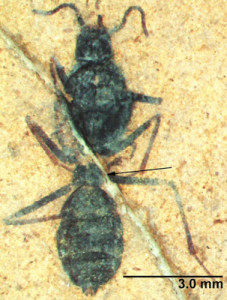 Jess and Mildred Fisher College of Science and Mathematics faculty member and ant expert J.S. LaPolla co-authored a paper on the 12 new prehistoric ant species discovered in Kishenehn Formation shale in northwestern Montana by Dale Greenwalt, a paleontologist at the Smithsonian’s National Museum of Natural History.
Jess and Mildred Fisher College of Science and Mathematics faculty member and ant expert J.S. LaPolla co-authored a paper on the 12 new prehistoric ant species discovered in Kishenehn Formation shale in northwestern Montana by Dale Greenwalt, a paleontologist at the Smithsonian’s National Museum of Natural History.
LaPolla and Greenwalt’s paper was published in a recent edition of the journal Sociobiology.
According to the Archaeology News Network, all 12 represent species new to science, known only from the locality in Montana. All are long extinct yet some represent genera that still exist. These Kishenehn fossils are from the middle Eocene (46 million years ago), a period of great interest for understanding the “evolution of ants and in particular, their march to terrestrial dominance,” the researchers say. It was during the Eocene that many of today’s ecologically dominant and species rich ant families emerged.

